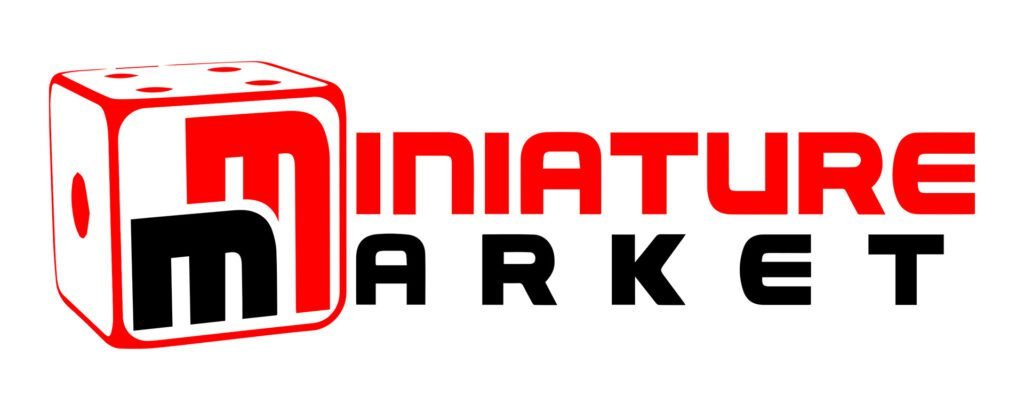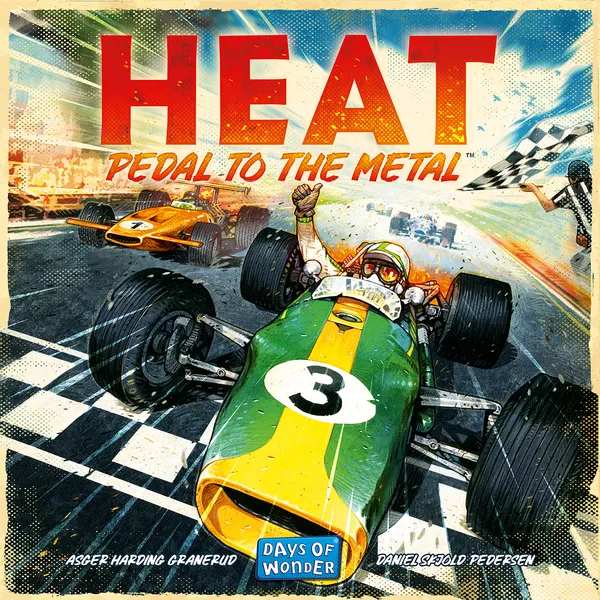
Today we’re diving into “Heat: Pedal to the Metal.” This is a racing board game from Days of Wonder, where you get to experience the adrenaline-pumping world of high-speed competitions. So, let’s break it down – what it is, what’s good, what’s bad, & if you should pick it up. Let’s get into it.
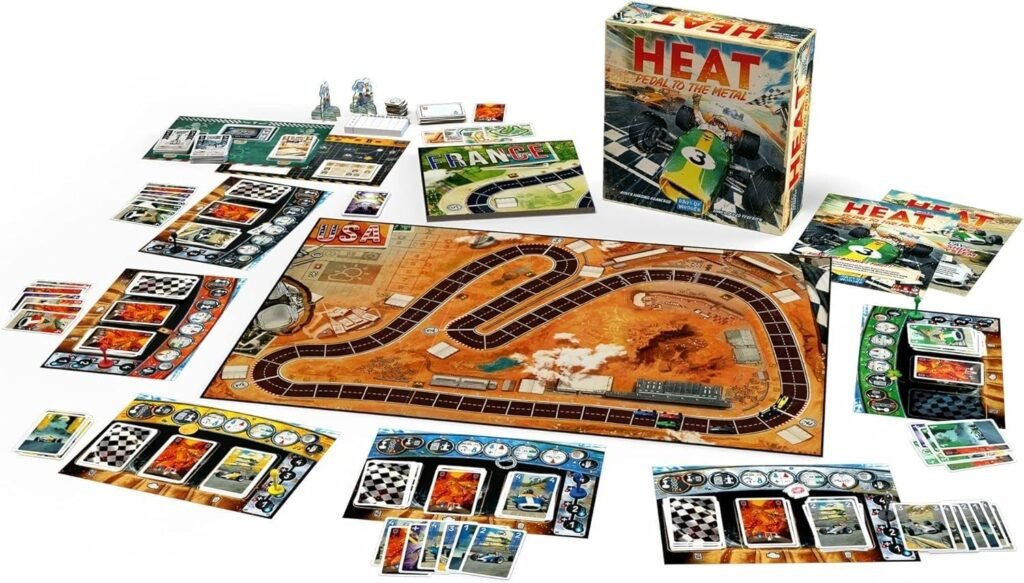
What It Is
“Heat: Pedal to the Metal” is a racing board game that immerses players in the thrilling atmosphere of 1960s Formula racing. Designed for 1-6 players, it offers a versatile gaming experience that can be enjoyed solo or with a group. The game typically takes about 30-45 minutes per race, making it a great fit for game nights. The objective is simple: outmaneuver your opponents & be the first to cross the finish line, but be careful not to overheat your engine along the way.
Gameplay Overview
A game of Heat: Pedal to the Metal is played over several rounds, each with distinct phases. Players begin by adjusting their gear, moving up or down one to two positions. The chosen gear dictates how many cards they can play; for instance, being in gear 3 allows a player to play three cards. These cards determine the number of spaces their car will move on the track. The player in the lead moves first, while the last-place player gets an adrenaline boost, moving an extra space. Additionally, any car ending its movement behind or next to another car can slipstream, gaining an extra two spaces. After movement, players draw back up to seven cards.
Managing your hand is crucial in this game. Each player holds seven cards of various types: Speed cards indicate the number of spaces a car moves, Stress cards introduce randomness, & Heat cards are dead weight, clogging up your hand. Players must strategically decide when to play Stress cards to minimize their negative impact & manage their Heat cards to maintain optimal performance.
At the start, players have one Heat card in their deck & can accumulate more based on their actions, such as shifting gears aggressively or taking corners too fast. Playing a Heat card offers no movement, making its strategic management essential. Initially, players may avoid Heat cards, but learning to incorporate them effectively can be advantageous, especially in critical moments like taking a corner hard to gain the lead.
Cooldown mechanisms are vital for managing Heat cards, allowing players to remove them from their hand & return them to their player board. This can be achieved by being in 1st or 2nd gear or by being in the last place, highlighting the importance of strategic gear management & position on the track.
Cornering is a significant aspect of Heat: Pedal to the Metal, mirroring the real-life importance of how racers handle corners. Entering a corner too fast requires adding Heat cards to the discard pile, & lacking sufficient Heat results in spinning out & stopping. Players must balance aggression with caution to avoid spinning out while maintaining competitive speed through corners.
The game simulates 1960s Formula racing, where safety was minimal, & cars were pushed to their limits. Players set their gear, play cards from their hand, & move according to the numbers on their cards. Stress cards add a layer of unpredictability, & Heat management is crucial as players must navigate corners & boost strategically without accumulating too much Heat.
Heat’s design emphasizes simultaneous planning & risk management. While players may find the game engaging initially, veteran gamers might notice predictable endgames, with races often ending in similar fashion due to the ease of managing Heat & gears. Despite this, Heat offers a blend of strategy & luck that can be enjoyed by a wide range of players, making it a compelling but potentially repetitive racing board game.
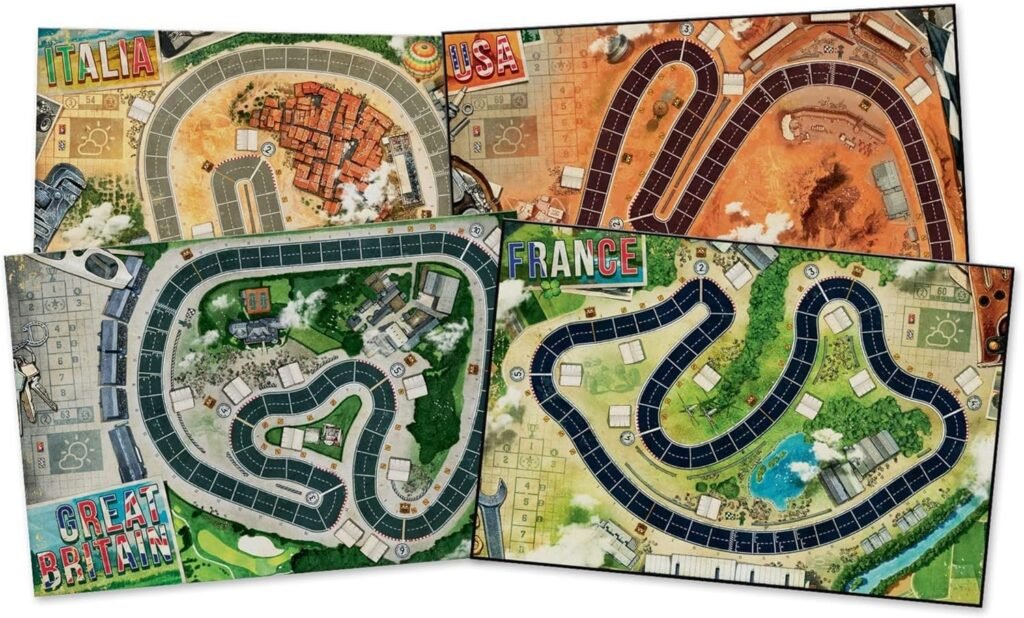
The Components
Days of Wonder has really outdone themselves with the components in “Heat.” The game features high-quality materials, including detailed miniature race cars & double-sided game boards that depict a variety of tracks. The 1960s-inspired artwork by Vincent Dutrait is vibrant & retro, perfectly capturing the era’s racing culture. The components not only look great but also enhance the overall gaming experience by immersing you in the theme.
The Good
“Heat: Pedal to the Metal” is a game that excels in accessibility & depth. The rules are straightforward, making it easy for new players to jump in, while the strategic elements keep seasoned gamers engaged. The game’s innovative mechanics, like heat & stress management, add layers of tension & strategy that make each race exciting & unpredictable.
The variety in the game is another strong point. With four double-sided tracks & the ability to customize your car, no two races are ever the same. The Championship System extends the game’s replayability, allowing you to experience a full season of racing with evolving challenges.
The miniatures & artwork are top-notch, adding a nostalgic charm that makes the game feel more like a toy & less like a strategic exercise. This element of fun is heightened by the intuitive gameplay, where even the smallest decisions can have a big impact on the outcome of the race.
The Bad
While “Heat” is a solid game, it does have a few drawbacks. The game can become somewhat predictable, especially for veteran gamers who may find the endgame repetitive. The strategies for managing heat & gears are effective, but once mastered, they can lead to similar outcomes in different races.
Another potential issue is the player count. While the game is enjoyable with fewer players, it really shines with five or six. The Legends module helps by adding AI competitors in solo or smaller group play, but the game’s competitive spirit is best experienced with a full table of players.
Lastly, while the various modules, like Weather & Garage, add interesting twists, they can become predictable over time. The solutions to the challenges they present might start to feel formulaic, somewhat reducing the excitement of these advanced features.
The Verdict
So, should you buy “Heat: Pedal to the Metal”? If you’re a fan of racing games or enjoy a mix of strategy & fun, then absolutely. The game offers a compelling blend of simplicity & depth that’s hard to find in the racing genre. The high-quality components & engaging mechanics make it a standout choice for game nights, especially with larger groups.
However, if you’re looking for a game with endless strategic variety or you primarily play with smaller groups, “Heat” might not fully meet your expectations. It’s a great game, but it’s at its best when played with a full roster of players, where the competitive tension really comes to life.
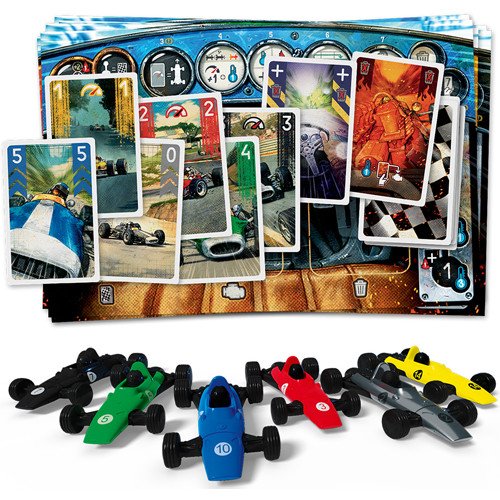
Final Thoughts
Heat is a game that’s secured a permanent spot in my collection, & for good reason. Its concept is simple, yet it’s executed with such finesse that it stands out in the crowded field of racing games. Sure, there are minor hiccups here & there, but honestly, what game doesn’t have them? The production quality is top-notch, with four tracks on two double-sided boards ensuring plenty of variety & replayability. Days of Wonder didn’t hold back in delivering a robust & engaging racing experience.
The little plastic cars are a stroke of genius. They manage to bridge the gap between a game & a toy, bringing a nostalgic joy that makes you feel like a kid again. The cars invite you to make engine noises & mimic movements in a way that’s irresistibly fun. This playful element adds a layer of charm & immersion, making the experience more than just a strategic exercise.
However, if you’re mostly playing with just two or three players, you might find the game less compelling. The Legends module, which adds AI rivals, helps mitigate this by making solo or smaller games enjoyable. But Heat truly shines with five or six players, where the competitive thrill of beating your friends to the finish line is at its peak. It’s at conventions & larger gatherings where I expect Heat will really flourish, becoming a staple due to its easy-to-learn mechanics & high fun factor.
Among the various modules, The Legends module stands out for enhancing solo & small group play, though it can be hit or miss depending on the track difficulty. The Weather module adds an interesting twist with weather effects that alter gameplay conditions. While it introduces some tactical variety, the solutions to these effects can become predictable, somewhat dampening the excitement.
The Garage module is where Heat truly comes alive. The card drafting process before each race adds depth & strategic variety, allowing players to customize their cars with 48 different upgrades. This not only makes each game unique but also mirrors the real-life customization & strategic planning of race car driving. It’s a delightful addition that brings more complexity & replayability to the game.
The Championship module wraps up the game experience nicely, allowing players to engage in a series of races with ongoing narrative elements like Sponsorship & Event cards. This module blends the different elements from the previous modules into a cohesive & immersive racing season. It’s a well-designed feature that adds a long-term strategic layer & enhances the storytelling aspect of the game.
Overall, Heat is one of the best racing board games I’ve played. Its blend of simplicity, fun, & strategic depth, especially with its advanced modules, makes it a standout in the genre. Whether you’re a casual gamer or a strategy enthusiast, Heat offers a compelling & enjoyable experience that’s hard to beat.
Purchase Options

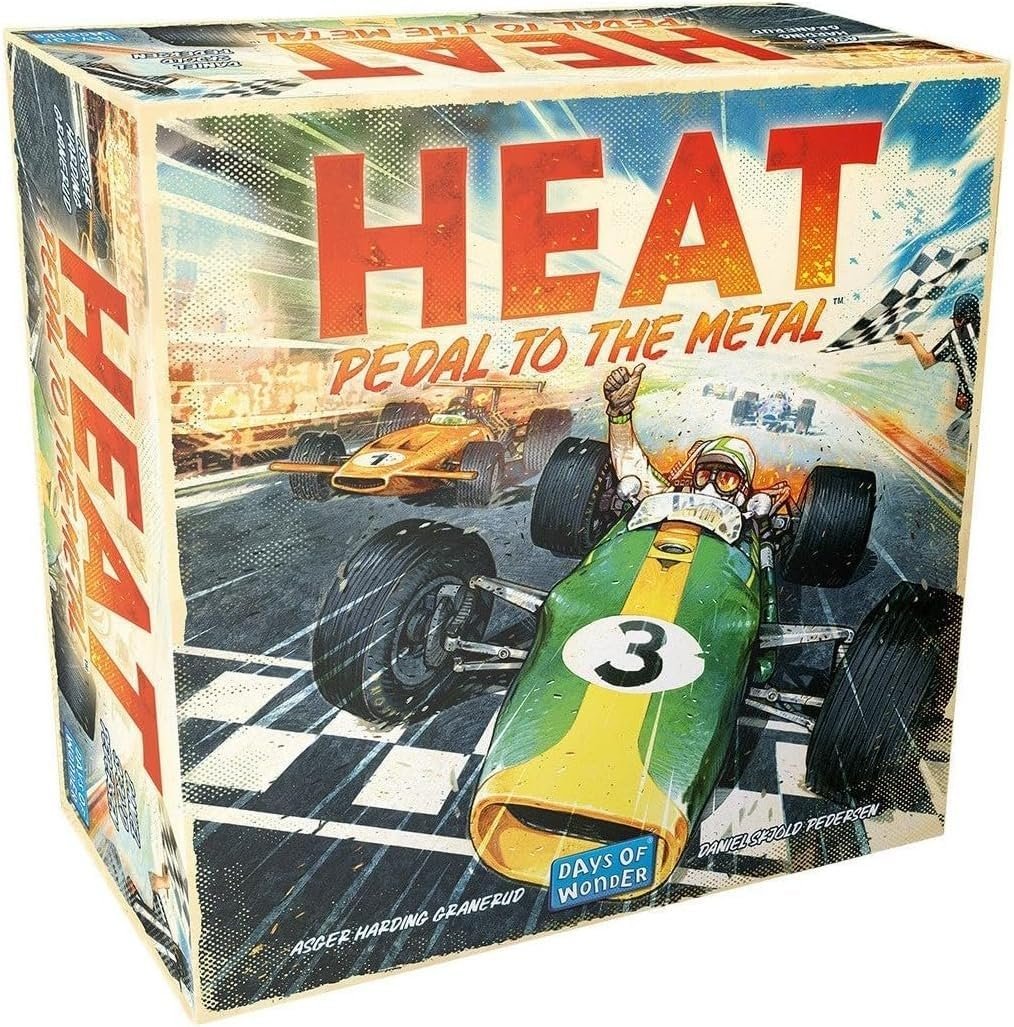
At no extra cost to you, The Board Game Site may receive revenue from affiliate and advertising partnerships for sharing this content and from purchases through links.



